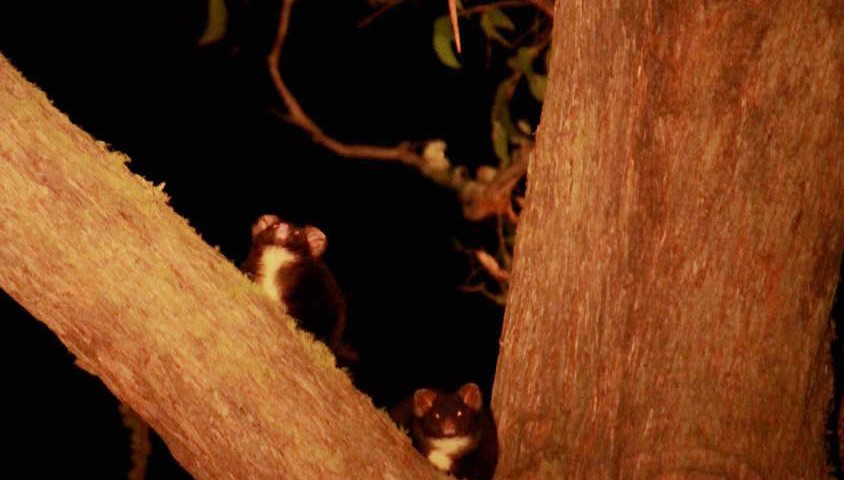A Gippsland-based group of citizen scientists claim VicForests has attempted to take credit for its work in protecting the habitats of nine endangered species.
Goongerah Environment Centre‘s (GECO) Ed Hill was shocked to see a media release from VicForests earlier this week regarding the stoppage of logging operations after the Department of Environment, Land, Water and Planning (DELWP) verified the population of greater gliders on the site.
The release announces the creation of a 100-hectare special protection zone (SPZ), which is required under environmental law in the case of more than 10 greater gliders being found along a one-kilometre transect in the region.
In the release, VicForests general manager for stakeholders and planning, Nathan Trushell stated: “VicForests had previously engaged external ecological experts to conduct surveys of this area prior to operations commencing which found some greater gliders but not the density required to trigger a protection zone.”
“We regularly use qualified external ecologists to conduct pre-harvest surveys on behalf of VicForests to look for threatened species and ensure they are protected.
“These surveys have found and protected nine populations of threatened species in 2016 in East Gippsland including the yellow-bellied glider, long-footed potoroo, crayfish and galaxias fish.” – Nathan Trushell, VicForests general manager, stakeholders and planning.
Read the full release.

Google Earth snapshot with red lines depicting proposed logging coupe boundaries. The red pins indicate the position of greater gliders as spotted by GECO within the coupe in question, while the black and white spots show the individuals detected by VicForests on their survey of a 1km transect that crosses 3 coupes. Click to enlarge.
There is no mention of the work committed by GECO volunteers that triggered logging to be stopped and DELWP to conduct a survey, however Hill also highlighted the logger’s reference to the other nine threatened species it claims to have protected.
“VicForests is claiming to have done all the groundwork, when in fact the few external ecologists they do engage to conduct their surveys are usually significantly under resourced, which inevitably leads to a paucity of data and, in turn, continued logging in these sensitive environments,” Hill alleged
Hill has called on VicForests to release their survey data that would show that it was their external ecologists who detected the nine threatened species, where they detected them and what land was protected as a result.
The incident is reminiscent of another situation earlier this year, when surveys by GECO prompted the creation of another SPZ to protect greater gliders, yet in that case no survey had taken place at all.
“The area of greater glider habitat where logging was stopped in January after a GECO survey, of which DELWP is now in the process of zoning as a special protected area, was not subject to any pre-logging survey by VicForests external ecologists at all.”

A logging history map that shows the extent of old-growth forest offering suitable nesting trees. The map reveals the area of suitable habitat that will need to be placed into a new SPZ, is a habitat island within a heavily logged landscape. Click to enlarge.
“While they did conduct surveys in this more recent case, it didn’t come as much of a surprise when they didn’t detect enough species in order to protect the site.”
VicForests has previously admitted that its approach to ecological surveys need improvement at the time GECO’s January survey detected the greater gliders, but the question still remains why the state logging agency retains the initial control of which areas get logged and which get protected.
“Not only do they under-resource the external ecologists, they also have a very narrow view of what areas require a survey. Many coupes that contain protected species are deemed not worth surveying by VicForests. So not only are they not conducting surveys appropriately, they are actually not doing them at all in many areas of protected species habitat.”
UPDATE: VicForests denies GECO’s claims that it didn’t perform independent surveys to establish the protection of habitat for nine threatened species.
A spokesperson for VicForests has provided Wild the following statement:
VicForests assesses every site for biodiversity values prior to harvesting and also undertakes additional targeted surveys for threatened species on sites which are most likely to contain potential habitat.
We engage qualified external ecologists to conduct these targeted surveys on our behalf to look for threatened species and ensure they are protected.
When a threatened species is detected in an area planned for timber harvesting, a Special Protection Zone (SPZ) is created by the Department of Environment, Land, Water and Planning to protect the species and its habitat.
There have been nine Special Protection Zones created to protect threatened species so far in 2016 as a result of surveys conducted by external ecological engaged by VicForests. The survey reports which led to the creation of the new SPZs are available to the public on our website.
GECO continues to work at protecting the unique environments found in the East Gippsland region through the use of citizen science and environmental advocacy.
We will continue to provide updates as more information becomes apparent.


